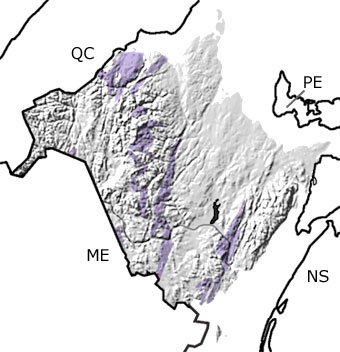Paleontology and geologyDuring the Silurian, subduction continued off the coast of Laurentia, pushing and pulling pieces of islands, oceanic crust, and the Avalon terrane up against the continent. Deep basins formed in between island chains as the crust was pulled down. Underwater avalanches that carried sediments into the deep basins can be found in some of the sandstones and mudstones of northern New Brunswick. Shallow environments still existed closer to the islands and Avalon terrane. Great coral reefs built up in these warm waters, teeming with brachiopods, clams, snails, crinoids, bryozoans, trilobites, eurypterids, and early fish. These fossils can be seen in some of the limestones and shales in northern and southern New Brunswick. Throughout the period, volcanism continued as the islands, slices of oceanic crust, and Avalon terrane collided with Laurentia. Igneous rocks from volcanoes that erupted on land and under water, as well as intrusions, can be found in northern, central, and southern New Brunswick. Many of the Silurian rocks have been metamorphosed by the heat and pressure from these and later collisions. |




